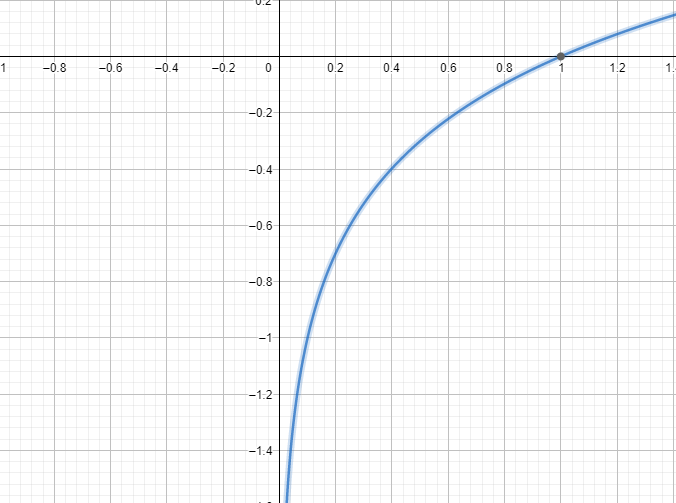
How do you find the vertical asymptote of a logarithmic function?
Answer
540.6k+ views
Hint: Horizontal asymptote is the value that any function in x-variable approaches infinity x approaches infinity and as x approaches negative infinity. Vertical asymptotes occur wherever the value of function approaches infinity or negative infinity. Keeping this information in mind, we shall proceed to find the vertical asymptote of a logarithmic function.
Complete step-by-step solution:
Vertical asymptote is basically an invisible vertical line that the graph of a function approaches and gets really close to but never actually touches. The point that the graph of a function never touches is the point where it is undefined.
We know that the logarithmic function is not defined at $x=0$. This is the equation of y-axis as well. Therefore, we understand that the graph of logarithmic function never touches the y-axis but it approaches negative infinity at the y-axis.
The graph of $\log x$ function is given below.

Even though the function seems to be approaching the y-axis but it never touches it in real. Therefore, the vertical asymptote of a logarithmic function is the y-axis.
Note: As we approach from the left, a vertical asymptote looks like the graph is approaching a vertical up to infinity but it never intersects with any point on the x-axis as it is not defined at that point. Similarly, as we approach from the right, the graph again does not intersect at any point and approaches a vertical up to infinity as it is undefined at that same point.
Complete step-by-step solution:
Vertical asymptote is basically an invisible vertical line that the graph of a function approaches and gets really close to but never actually touches. The point that the graph of a function never touches is the point where it is undefined.
We know that the logarithmic function is not defined at $x=0$. This is the equation of y-axis as well. Therefore, we understand that the graph of logarithmic function never touches the y-axis but it approaches negative infinity at the y-axis.
The graph of $\log x$ function is given below.

Even though the function seems to be approaching the y-axis but it never touches it in real. Therefore, the vertical asymptote of a logarithmic function is the y-axis.
Note: As we approach from the left, a vertical asymptote looks like the graph is approaching a vertical up to infinity but it never intersects with any point on the x-axis as it is not defined at that point. Similarly, as we approach from the right, the graph again does not intersect at any point and approaches a vertical up to infinity as it is undefined at that same point.
Recently Updated Pages
Why are manures considered better than fertilizers class 11 biology CBSE

Find the coordinates of the midpoint of the line segment class 11 maths CBSE

Distinguish between static friction limiting friction class 11 physics CBSE

The Chairman of the constituent Assembly was A Jawaharlal class 11 social science CBSE

The first National Commission on Labour NCL submitted class 11 social science CBSE

Number of all subshell of n + l 7 is A 4 B 5 C 6 D class 11 chemistry CBSE

Trending doubts
What is meant by exothermic and endothermic reactions class 11 chemistry CBSE

10 examples of friction in our daily life

One Metric ton is equal to kg A 10000 B 1000 C 100 class 11 physics CBSE

1 Quintal is equal to a 110 kg b 10 kg c 100kg d 1000 class 11 physics CBSE

Difference Between Prokaryotic Cells and Eukaryotic Cells

What are Quantum numbers Explain the quantum number class 11 chemistry CBSE




